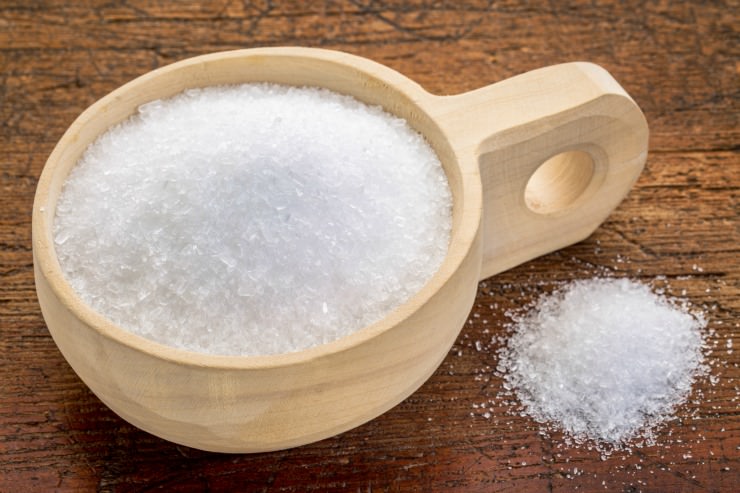Has Epsom salt ever been used in your garden? You may try it in the spring. You can add it to the soil before sowing seeds to give your garden a strong start. Magnesium promotes seed germination and strengthens cell walls, which results in more and more robust seedlings.
For optimal results, mix 1 to 2 teaspoons of salt into the soil at the bottom of each hole before adding seeds, or use 1 cup of salt per 100 square feet of tilled soil.
Gardening With Epsom Salt
Gardening with Epsom salt is of great benefit to tomatoes and peppers. If the soil becomes depleted of magnesium, Epsom Salt will help. You can use it safely on almost all of your garden plants because it does not carry the same risk of abuse as the majority of commercial fertilizers.
Epsom salt needs to be fed to tomatoes twice as frequently as other plants. Additionally, the bulk of tomato fertilizers contains calcium, which will compete with magnesium for root absorption because tomato vines are susceptible to calcium insufficiency (blossom end rot). Foliar feeding is a more effective way to feed these plants magnesium.
Every two weeks, use 2 teaspoons of dissolved Epsom salt per gallon of water to water tomato vines.
Another common garden plant with a larger-than-average fruit-to-plant size ratio is the pepper. To produce bigger harvests of larger fruits, they should also be fed magnesium every two weeks. The soil amendment strategy may be favored in this case as overwatering hot peppers can lead to fruit with reduced heat.
Every week, add 1 tablespoon of Epsom salt for every foot of height to the drip line of your pepper plants.
The yellowing of the leaves is a sign that plants aren’t getting enough magnesium. This is so because magnesium is necessary for the creation of chlorophyll. To achieve better foliage, scatter Epsom salt around your plants.
The plants in your vegetable garden, as well as any trees, shrubs, flowers, and grasses you want to make greener, will benefit from a monthly application of approximately 1 tablespoon per 12 inches of height.
Plants lacking in magnesium may also experience leaf curling. Epsom salt should once more be added to the soil, near the sick plant’s base. Alternately, you can apply it straight to the leaves and combine 2 tablespoons of Epsom salt in a gallon of water for quicker absorption.

Have you ever wondered why your neighbor’s rose bushes have more blooms and are generally fuller than yours? Epsom salt is probably the solution. In addition to encouraging the growth of new canes from the plant’s base, it also helps roses produce larger flowers in greater numbers.
Additionally, Epsom salt naturally boosts the production of chlorophyll, resulting in darker leaves.
For the maximum result, roses should have Epsom salt treatments at the very least at planting time, once again at the first indication of new growth, and once more when the flowers are fully bloomed.
You can also plant roses with bare roots after being washed in water with dissolved Epsom salt.
In your gardens, Epsom salt actually can’t be used in excess. Since magnesium sulfate has a pH of 7, it won’t damage your soil. The crystals disintegrate into three substances that are useful to most plants in some way: water, magnesium, and sulfur. Epsom salt may quickly and effectively solve a wide range of issues in your garden while being secure, simple to use, and easy to apply. Epsom salt is one of the best tools for the responsible, health-conscious gardener since, as if that weren’t enough, it is also inexpensive.
BUY ON AMAZON
